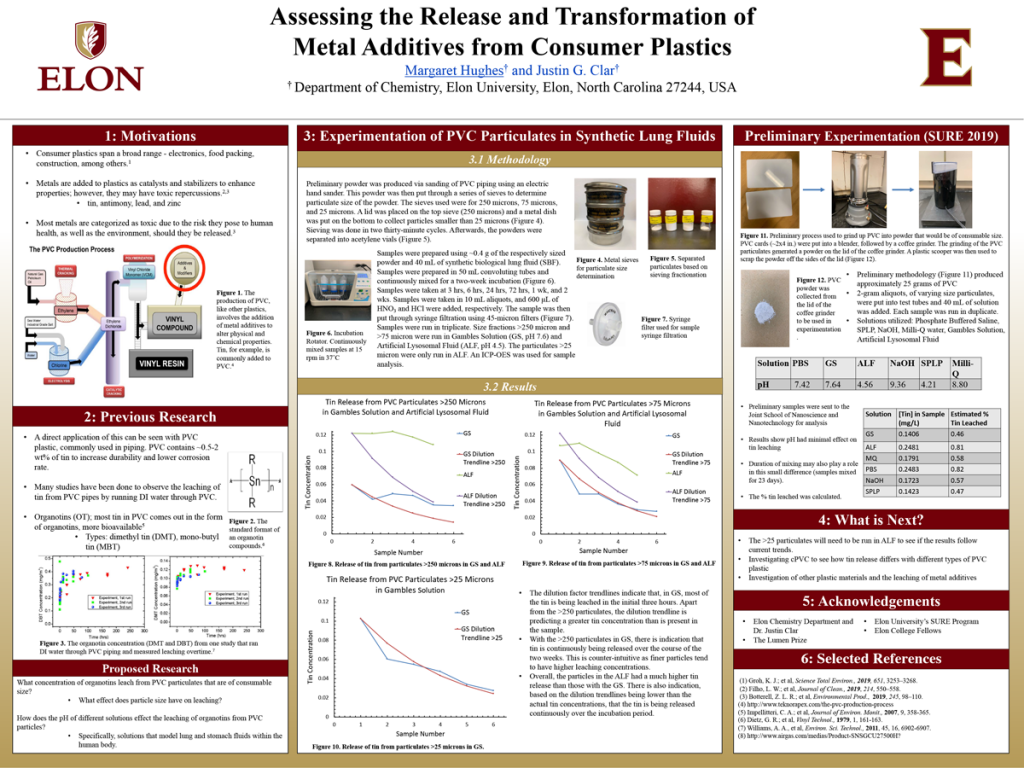Margaret Hughes
Class of 2021
- Biochemistry

Assessing the Release and Transformation of Metal Additives from Consumer Plastics
Project Mentor:
- Justin Clar, assistant professor of chemistry
Project Abstract
The use of consumer plastics spans a very broad range, including electronics, food packaging, and even clothing. Trace metals are often added to plastics to reduce degradation/discoloration, as well as increase strength and flexibility. However, trace metals can be toxic to humans and the environment when unintentionally released from these plastic products. Polyvinyl chloride (PVC), commonly used in piping, is specifically known to contain large amounts of tin (0.5 – 2 wt%). Previous research has investigated the release of tin compounds from PVC piping under bench-scale flow systems. However, these studies do not address other exposure routes, including inhalation of secondary particles produced during PVC construction activities (cutting, sanding, grinding, etc.). In this study, elemental tin and organotin mobility are being tracked during simulated construction activities. PVC piping is put through a series of sanding and grinding processes to generate different sized fractions, that then undergo incubation in a variety of synthetic biological fluids (SBFs). Tin concentration for each sample is then measured using ICP optical emission spectroscopy in order to track tin release from PVC particulates. Preliminary results from this experiment have displayed an average tin release around 0.62 wt % of the PVC in solution, with variation in sample solution pH, ranging from 4.2-10.4. Additional experiments in two different SBF’s, Gambles Solution and Artificial Lysosomal Fluid, have investigated tin release from PVC particulates over a two-week incubation period. Further results of this project will give the scientific community insight into the likely environmental and human health consequences from the use of PVC, due to tin additives.
 Download Project Presentation
Download Project Presentation